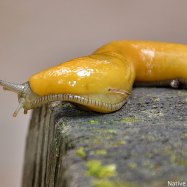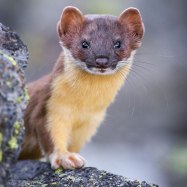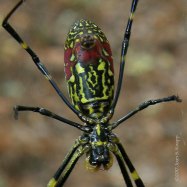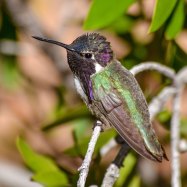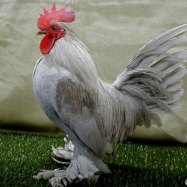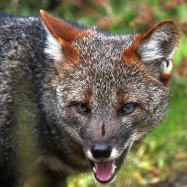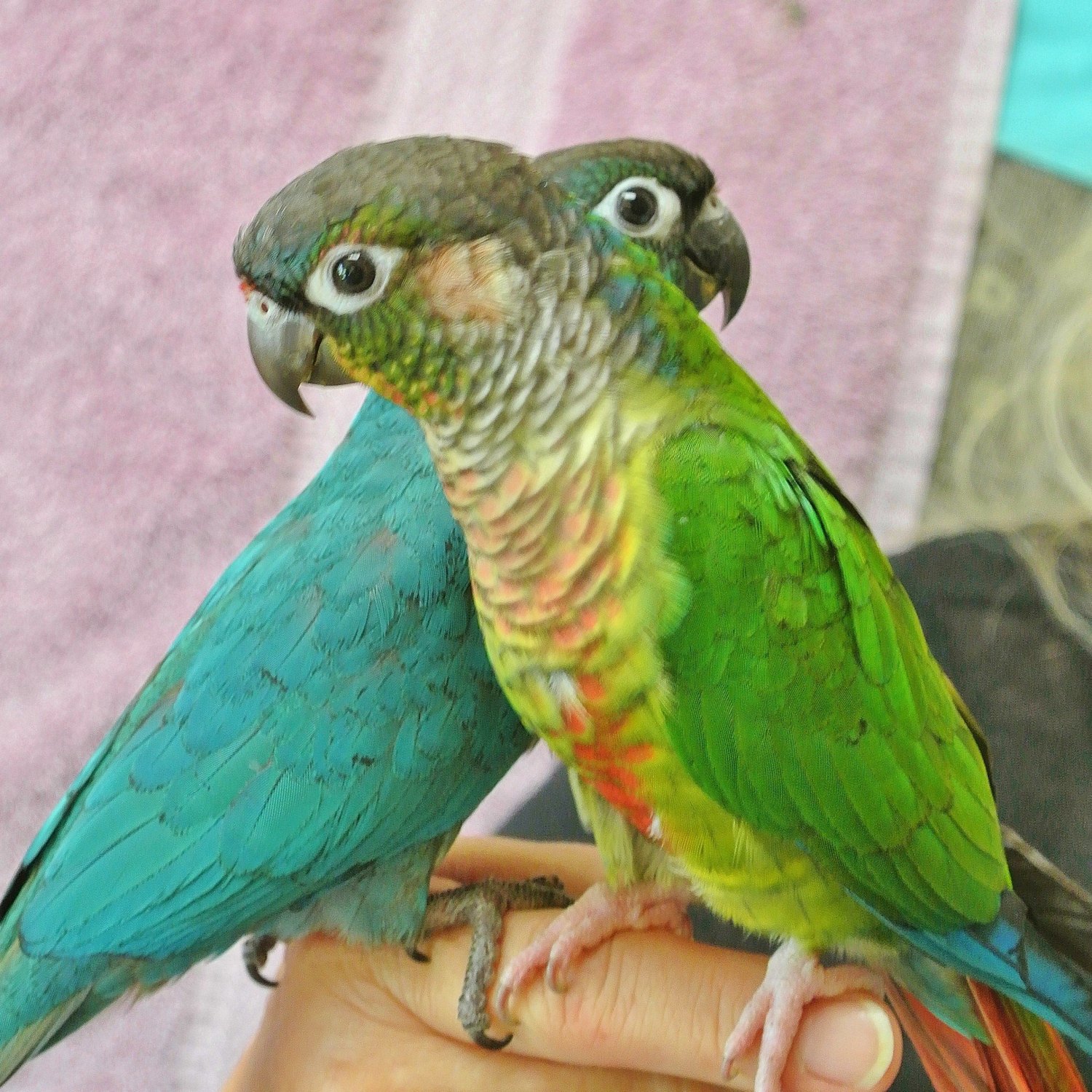
Conure
10 to 17 inches (25 to 43 cm)
Meet the Conure, a colorful and vibrant bird found in various habitats of South and Central America. Ranging in length from 10 to 17 inches, this small to medium-sized creature belongs to the family Psittacidae and has a stocky build. With its playful personality and beautiful feathers, the Conure is a popular pet choice for bird enthusiasts. #Conure #Psittacidae #SouthAmerica #CentralAmerica
Animal Details Summary:
Common Name: Conure
Kingdom: Animalia
Habitat: Tropical and subtropical forests, savannas, and grasslands
The Colorful and Charismatic Conure: A Bird of Many Talents
The rainforest is alive with the sounds of nature. The chirping of birds, the rustle of leaves, and the occasional roar of a monkey can be heard throughout. Amidst this symphony of sounds, one bird stands out with its vibrant colors and charming personality - the Conure.Scientifically known as Aratinga, the Conure is a small to medium-sized bird belonging to the order Psittaciformes and the family Psittacidae Conure. They are commonly referred to as Conures, a name that accurately captures their confident and cheerful nature. These beautiful birds can be found in various habitats in South and Central America, making them a beloved sight amongst locals and tourists alike.
Nestled in the chordate phylum, the Conure shares a family with other colorful birds such as parrots and macaws. However, what sets the Conure apart is its unique body shape, vibrant plumage, and versatile abilities. Let's delve deeper into the world of Conures and discover what makes them one of the most fascinating birds in the world.
Habitat and Distribution
The Conure is a master of adaptation and can be found in a variety of habitats in South and Central America. They are commonly spotted in tropical and subtropical forests, savannas, and grasslands. This flexibility in habitat allows the Conure to thrive in a variety of environments, making it a versatile and resilient bird.In terms of distribution, Conures can be found throughout South and Central America, with each species occupying a specific region Codfish. For example, the Blue-crowned Conure is found in Bolivia, Peru, Brazil, and Paraguay, while the Nanday Conure inhabits Argentina, Brazil, and Paraguay. This diverse distribution across the continent has contributed to the Conure's widespread popularity.
Appearance and Coloration
Conures are known for their dazzling colors, making them a popular choice amongst bird enthusiasts. Their plumage comes in a variety of vibrant hues such as green, blue, red, and yellow, with each species sporting a unique color pattern. The stunning coloration makes them a sight to behold, and it's no wonder that they are often referred to as the "clown of the parrot world."Apart from their colorful feathers, Conures also have a distinct body shape. They are small to medium-sized birds with a stocky build, making them look similar to a parrot. They have a curved beak, perfect for cracking open nuts and seeds, and a long tail that aids in balancing and navigating through dense vegetation.
Feeding and Diet
As omnivorous birds, Conures have a diverse diet that includes fruits, nuts, seeds, insects, and even small vertebrates. Their versatile feeding habits enable them to survive in a variety of environments, and they play a crucial role in the ecosystem by distributing seeds and pollinating flowers.In captivity, Conures need a well-balanced diet that includes a mix of fruits, vegetables, and a specialized parrot food. Offering your Conure a variety of food not only meets their nutritional needs but also keeps them mentally stimulated.
Behavior and Social Interactions
One of the most endearing qualities of Conures is their outgoing and social nature. These birds are highly social and form strong bonds with their fellow Conures and their human owners. In the wild, Conures live in large flocks, flying and foraging together. This instinct to be in a group is evident in captive Conures, who crave the company of their owners and other Conures.Another interesting behavior of Conures is their ability to mimic sounds and words. While not all Conures have this talent, some species, such as the Sun Conure, have a remarkable ability to mimic human speech. This playful and vocal nature makes them a delightful addition to any household.
The Importance of Conservation
Despite their widespread popularity, Conures face many threats in their natural habitat. Deforestation, illegal pet trade, and habitat destruction are the primary factors contributing to the decline of Conure populations. In many countries, it is illegal to trade or keep Conures as pets without proper permits, but unfortunately, this law is often ignored.Conservation efforts are crucial in protecting the Conure and its natural habitat. Organizations such as World Parrot Trust and International Conure Association work towards raising awareness and implementing conservation programs to safeguard these beautiful birds.
In Conclusion
In the animal kingdom, the Conure stands out as a unique and charming bird. With its colorful appearance, talented vocal abilities, and friendly demeanor, this species has captured the hearts of many. However, as much as Conures make wonderful pets, it's crucial to remember that they belong in their natural habitat. Their vibrant colors and lively personality are best enjoyed in the wild, surrounded by lush forests and the company of their fellow Conures.As responsible pet owners, it's essential to ensure that our Conure's needs are met, and they receive the proper care and nutrition they require. Let us also be mindful of their dwindling populations in the wild and take action to protect these charismatic birds for future generations to admire and cherish.

Conure
Animal Details Conure - Scientific Name: Aratinga
- Category: Animals C
- Scientific Name: Aratinga
- Common Name: Conure
- Kingdom: Animalia
- Phylum: Chordata
- Class: Aves
- Order: Psittaciformes
- Family: Psittacidae
- Habitat: Tropical and subtropical forests, savannas, and grasslands
- Feeding Method: Omnivorous
- Geographical Distribution: South and Central America
- Country of Origin: Various countries in South and Central America
- Location: Various habitats in South and Central America
- Animal Coloration: Vibrant colors such as green, blue, red, and yellow
- Body Shape: Small to medium-sized bird with a stocky build
- Length: 10 to 17 inches (25 to 43 cm)
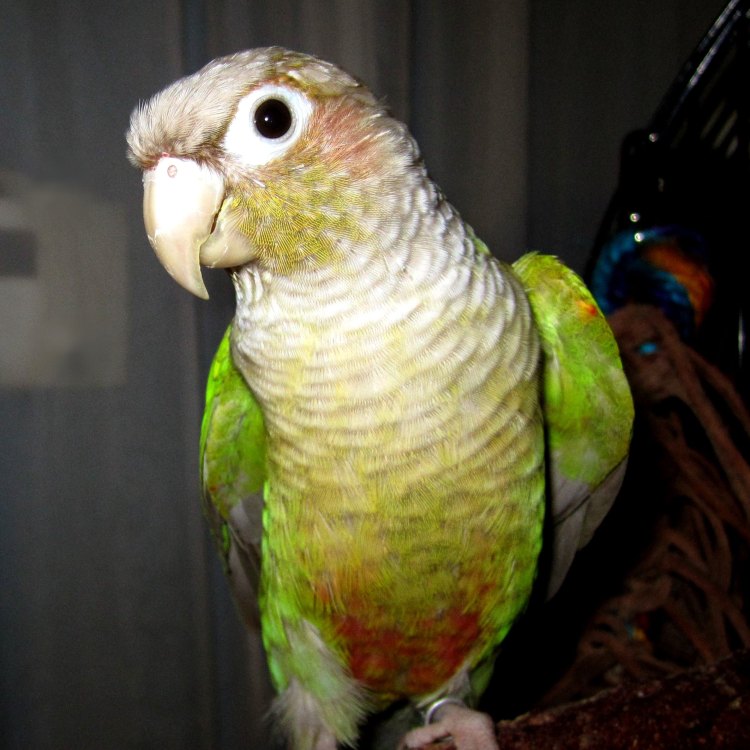
Conure
- Adult Size: Small to medium-sized bird
- Average Lifespan: 10 to 30 years
- Reproduction: Sexual
- Reproductive Behavior: Monogamous
- Sound or Call: Loud screeches, squawks, and chirps
- Migration Pattern: Some species are migratory
- Social Groups: Highly social, often found in flocks
- Behavior: Active and playful
- Threats: Habitat loss and illegal pet trade
- Conservation Status: Varies by species; some are of least concern, while others are threatened
- Impact on Ecosystem: Seed dispersal
- Human Use: Popular as pets
- Distinctive Features: Brightly colored plumage and strong beak
- Interesting Facts: Conures are known for their intelligence and ability to mimic human speech.
- Predator: Birds of prey, snakes, and mammals
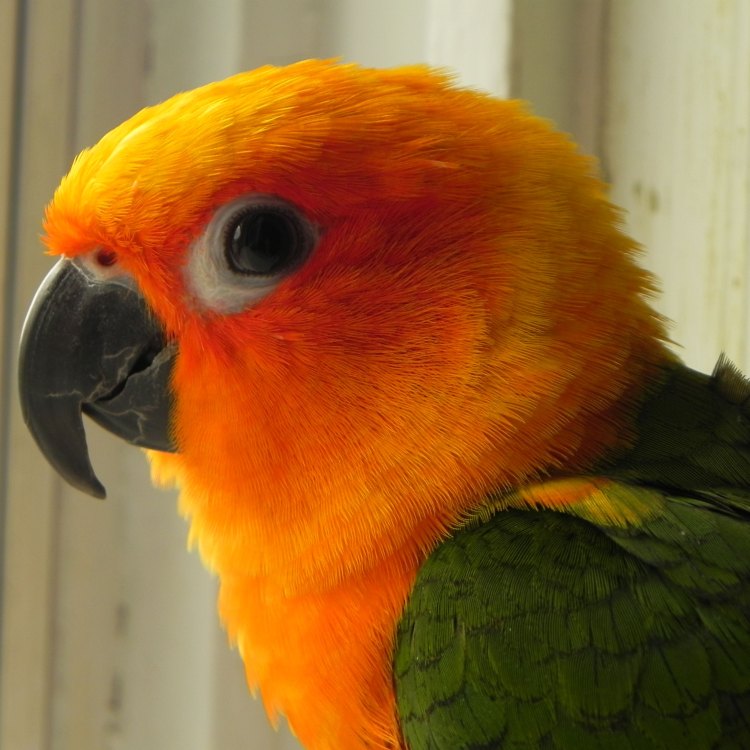
Aratinga
The Enchanting World of Conures: Small Birds with Big Personalities
In the world of birds, there is one group that stands out for their bright and colorful plumage, playful personalities, and impressive intelligence – the conures. These small to medium-sized birds can easily capture the hearts of bird enthusiasts and casual observers alike with their charming features and endearing behaviors.But what exactly are conures, and what sets them apart from other bird species? In this article, we will delve into the fascinating world of conures, exploring their unique characteristics, behavior, and impact on both humans and the ecosystem.
Conures belong to the parrot family and are known for their small to medium size, making them perfect companions for those who don't have enough space for larger birds PeaceOfAnimals.Com. They come in a variety of species, each with its own distinctive features and quirks. Some of the most popular species of conures include the Green-cheeked Conure, Sun Conure, and Blue-crowned Conure.
One of the first things you may notice about conures is their bright and colorful plumage. These birds come in a variety of colors, with some species having a mix of vibrant red, yellow, blue, and green feathers. This combination of colors is not only aesthetically pleasing but also serves as a way for conures to attract potential mates and communicate with other birds.
But what truly sets conures apart from other parrots is their strong and sturdy beak. This beak not only allows them to crack open nuts and seeds but also provides them with a powerful tool for communication and exploration. Conures are known for their loud screeches, squawks, and chirps, which they use to communicate with other birds and humans. This is why they are often referred to as "loud birds" – but don't let their vocalizations deter you, as they also have the ability to mimic human speech, making them quite entertaining pets Corgipoo.
In terms of size, conures range from around 10-20 inches, with some species reaching up to 30 inches. They have a lifespan of 10 to 30 years, depending on the species and their care. This means that bringing a conure into your home is a long-term commitment, and their lifespan allows for a deep and lasting bond between the bird and its human companions.
Now that we have covered the basics, let's explore the more intriguing aspects of conures – their behavior and social habits. Conures are highly social birds and are often found in flocks in the wild. This means that they thrive on social interaction and need plenty of mental stimulation to stay happy and healthy. In the wild, they are known to form monogamous pairs and have a keen sense of family and community, which they carry over into their lives in captivity.
Conures are known for their active and playful nature, with their energy and curiosity constantly keeping their owners entertained. They love to climb, chew, and play with toys, making them great companions for those who are looking for an active and engaging pet. However, this also means that they need a lot of space to spread their wings and engage in physical activities, so providing them with a roomy cage and plenty of playtime outside the cage is essential for their well-being.
While conures make charming and lovable pets, they also play a crucial role in the ecosystem. In the wild, they are seed dispersers, meaning they help with pollination and the dispersal of seeds from trees and plants to different areas. This makes them important contributors to the biodiversity of their natural habitats.
Unfortunately, conures, like many other bird species, face several threats in the wild, including habitat loss and the illegal pet trade. Habitat loss due to deforestation and human activities is a major concern for many conure species, leading to a decline in their populations. The illegal pet trade also poses a significant threat, as these birds are highly sought after for their charming personalities and ability to mimic human speech. This is why it is crucial to only purchase conures from reputable breeders and to never support the illegal pet trade.
In terms of conservation status, the population of conures varies by species. Some are considered of least concern, while others are threatened due to human activities and habitat loss. It is essential to educate ourselves and others about the importance of preserving these birds' natural habitats to ensure their survival in the wild.
Conures have been popular pets for many years due to their charming personalities and beautiful plumage. They have been kept as pets by humans for centuries, with evidence of their presence as pets dating back to ancient civilizations like the Aztecs and Mayans. Today, conures continue to be popular among bird enthusiasts and are a common sight in pet stores and homes around the world.
However, as with any pet, it is essential to do thorough research and understand the responsibilities that come with owning a conure. These birds require a significant amount of care, attention, and space to thrive, and it is crucial to provide them with a comfortable and enriching environment to keep them happy and healthy.
In conclusion, conures are small birds with big personalities, making them a delight to have as pets. Their intelligence, playful nature, and endearing behavior make them a perfect companion for those looking for an active and engaging pet. However, it is crucial to always prioritize the well-being and conservation of these birds in the wild. Together, we can ensure that the enchanting world of conures continues to thrive for many generations to come.">
The Enchanting World of Conures: Small Birds with Big Personalities
In the world of birds, there is one group that stands out for their bright and colorful plumage, playful personalities, and impressive intelligence – the conures. These small to medium-sized birds can easily capture the hearts of bird enthusiasts and casual observers alike with their charming features and endearing behaviors.But what exactly are conures, and what sets them apart from other bird species? In this article, we will delve into the fascinating world of conures, exploring their unique characteristics, behavior, and impact on both humans and the ecosystem.
Conures belong to the parrot family and are known for their small to medium size, making them perfect companions for those who don't have enough space for larger birds. They come in a variety of species, each with its own distinctive features and quirks. Some of the most popular species of conures include the Green-cheeked Conure, Sun Conure, and Blue-crowned Conure.
One of the first things you may notice about conures is their bright and colorful plumage. These birds come in a variety of colors, with some species having a mix of vibrant red, yellow, blue, and green feathers. This combination of colors is not only aesthetically pleasing but also serves as a way for conures to attract potential mates and communicate with other birds.
But what truly sets conures apart from other parrots is their strong and sturdy beak. This beak not only allows them to crack open nuts and seeds but also provides them with a powerful tool for communication and exploration. Conures are known for their loud screeches, squawks, and chirps, which they use to communicate with other birds and humans. This is why they are often referred to as "loud birds" – but don't let their vocalizations deter you, as they also have the ability to mimic human speech, making them quite entertaining pets.
In terms of size, conures range from around 10-20 inches, with some species reaching up to 30 inches. They have a lifespan of 10 to 30 years, depending on the species and their care. This means that bringing a conure into your home is a long-term commitment, and their lifespan allows for a deep and lasting bond between the bird and its human companions.
Now that we have covered the basics, let's explore the more intriguing aspects of conures – their behavior and social habits. Conures are highly social birds and are often found in flocks in the wild. This means that they thrive on social interaction and need plenty of mental stimulation to stay happy and healthy. In the wild, they are known to form monogamous pairs and have a keen sense of family and community, which they carry over into their lives in captivity.
Conures are known for their active and playful nature, with their energy and curiosity constantly keeping their owners entertained. They love to climb, chew, and play with toys, making them great companions for those who are looking for an active and engaging pet. However, this also means that they need a lot of space to spread their wings and engage in physical activities, so providing them with a roomy cage and plenty of playtime outside the cage is essential for their well-being.
While conures make charming and lovable pets, they also play a crucial role in the ecosystem. In the wild, they are seed dispersers, meaning they help with pollination and the dispersal of seeds on trees and plants to different areas. This makes them important contributors to the biodiversity of their natural habitats.
Unfortunately, conures, like many other bird species, face several threats in the wild, including habitat loss and the illegal pet trade. Habitat loss due to deforestation and human activities is a major concern for many conure species, leading to a decline in their populations. The illegal pet trade also poses a significant threat, as these birds are highly sought after for their charming personalities and ability to mimic human speech. This is why it is crucial to only purchase conures from reputable breeders and to never support the illegal pet trade.
In terms of conservation status, the population of conures varies by species. Some are considered of least concern, while others are threatened due to human activities and
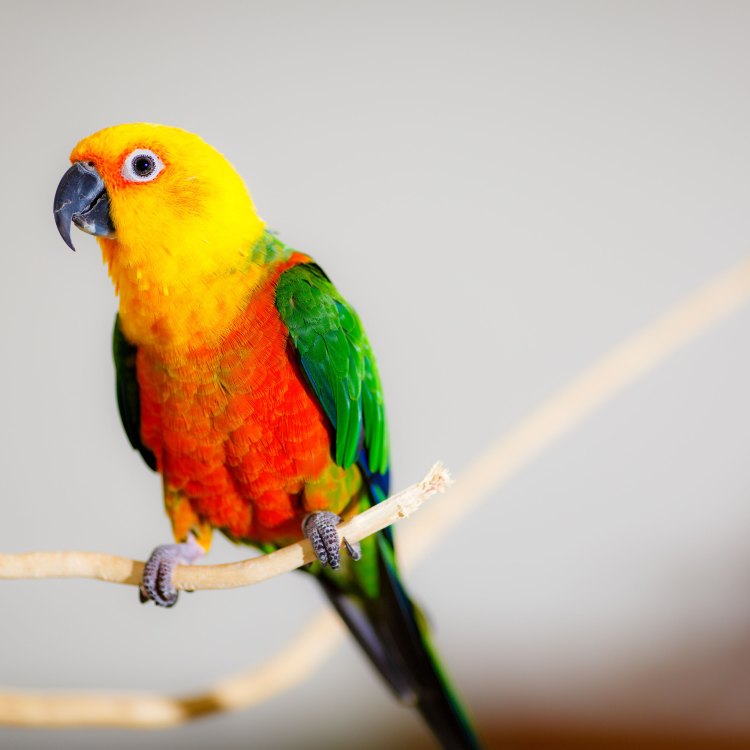
The Colorful and Charismatic Conure: A Bird of Many Talents
Disclaimer: The content provided is for informational purposes only. We cannot guarantee the accuracy of the information on this page 100%. All information provided here may change without prior notice.

